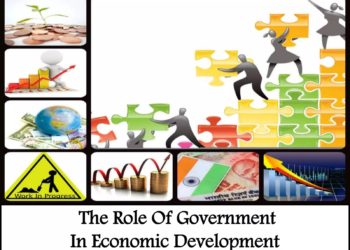The world of investing is fickle and ever-changing. This realm is characterized by uncertainty and risk and is especially tricky for investors. Take an investor wanting to invest in a money market fund. This investor would have to juggle several factors such as safety, liquidity and yields amid fierce competition between multiple investment funds. Naturally, such an investor would gravitate to the fund that offers low-risk securities, higher yields and more liquidity.
However, what if there are two or more funds offering the same product? On what grounds would the investor base his or her choices? This article explores decision-making under risky circumstances, building on principles from psychology and behavioral economics, as well as recommendations for investment funds to stand out.
The analysis of decision-making under risk has largely been dominated by expected utility theory. This theory is a fundamental concept in behavioral economics. It states that when making decisions under uncertainty, individuals evaluate potential outcomes by considering their probabilities and the utility (satisfaction or happiness) associated with each outcome. People aim to maximize their expected utility, making choices based on the balance between potential gains and losses and the likelihood of each outcome occurring. It is a rational framework used to explain human decision-making in uncertain situations.
In their seminal paper titled “Prospect Theory: An Analysis of Decision Making Under Risk,” the authors Daniel Kahneman and Amos Tversky challenge this theory while laying bare its most notable drawbacks. First, they argue that it assumes people make decisions based on rational assessments of probabilities and outcomes. However, this does not always align with human behavior. Furthermore, the theory struggles to incorporate social and psychological factors that significantly impact decision-making. It doesn’t account for emotions like fear or regret, which influence choices, particularly in uncertain situations.
The authors developed an alternative model called prospect theory. This theory suggests people do not always make decisions rationally as expected utility theory predicts. Instead, they evaluate potential outcomes based on perceived gains and losses relative to a reference point, often the current situation. People are more averse to losses than they are motivated by equivalent gains (loss aversion). Moreover, their choices are influenced by the way options are presented (framing effect). Prospect theory accounts for the psychological factors that affect decision-making under uncertainty.
Framing effect in action
Individuals are more likely to desire risks when information is framed negatively but seek to avoid risks when information is framed positively.
Imagine a pharmaceutical company launches a new preventive medication. If the company markets the medication as having a 90% success rate (positively framed), most people would be inclined to use it, avoiding the risk of disease contraction and focusing on the positive outcome. However, if the same medication is presented differently, with a 10% failure rate (negatively framed), even though it conveys the same information, people might be hesitant, emphasizing the negative aspect and accepting the risk. This shift in perception despite identical statistical information is an example of the framing effect.
The framing, whether emphasizing success or failure, significantly influences people’s decisions, showcasing how the presentation of information can impact choices and judgments.
How investment funds can take advantage
Investment funds can strategically use the framing effect to attract new investors in several ways:
– Using positive language: Frame investment descriptions in positive language. For example, instead of saying “low risk,” say “high stability.” Positive framing can create a sense of security and confidence.
– Comparative framing: Compare the fund’s performance to a relevant benchmark or competitors, emphasizing situations where the fund outperforms others. Relative success can be more persuasive than absolute numbers.
– Emphasize gains over losses: Highlight potential gains rather than losses. Present potential profits investors could make rather than focusing on potential losses, tapping into the human tendency to be more motivated by gains.
– Using visual representation: Use visual aids like charts and graphs to visually frame data. Visual representations of positive trends can create a more favorable impression.
– Social proof: Use testimonials and success stories from existing investors. Positive experiences from others can frame the fund in a favorable light, creating trust and credibility.
– Utilizing scarcity framing: Introduce limited-time offers or exclusive opportunities to create a sense of urgency. The perception of scarcity often prompts quicker decision-making.
– Adopt storytelling: Share real-life stories of investors who benefited significantly from the fund. Narrative framing can emotionally connect with potential investors, making the investment opportunity more relatable and attractive.
By strategically incorporating these framing techniques, investment funds can influence how potential investors perceive their offerings, making them more appealing and encouraging investment decisions.

















